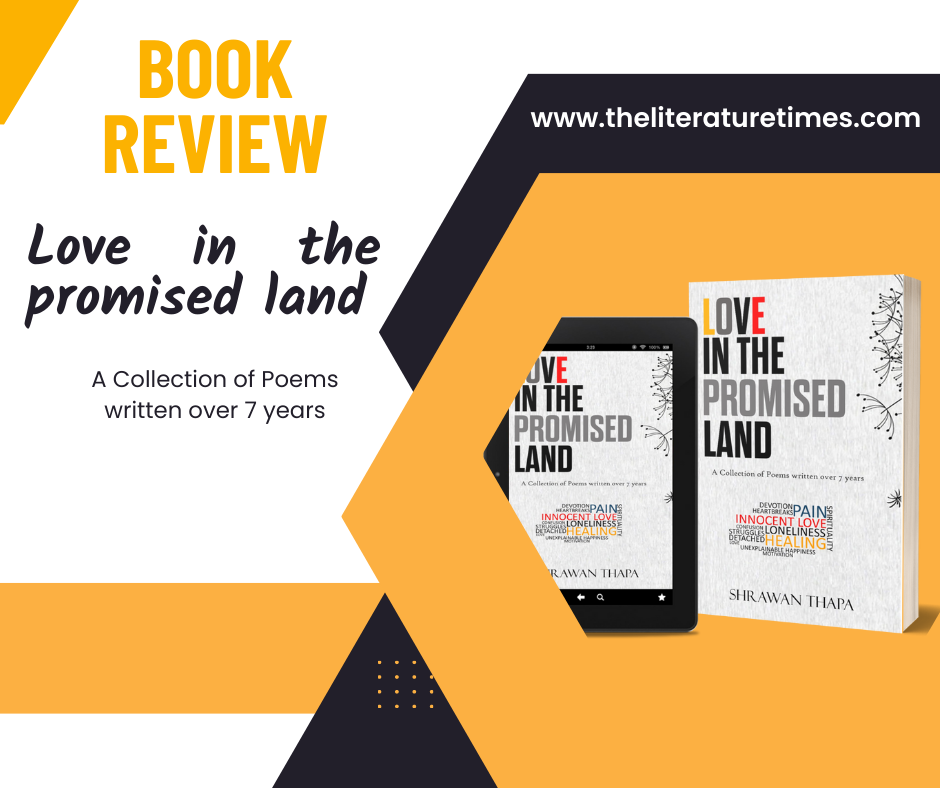Love poetry is a beautiful way to express the depth and passion of romantic feelings. It has been a staple of literature for centuries, dating back to ancient civilizations such as Greece and Rome. Some of the most famous love poems in history, such as Shakespeare’s sonnets and poetry by poets like Rumi and Hafez, have been passed down through the ages, and their words still resonate with readers today. However, with changing times through the centuries, love poetry continues to be written in the same manner, only the style of presentation has changed. An incarnation of this newly evolved style is “Love in the Promised Land” by Shrawan Thapa, which is more of a poetry that comes from the heart to the heart, and hence, establishes a connection that lasts even after the book is finished.
One of the most striking aspects of “Love in the Promised Land” is its ability to capture the complexity and nuances of the human heart. Love poetry can evoke a wide range of emotions, from the euphoria of new love to the pain and heartbreak of lost love. Through its use of imagery, metaphor, and other literary devices, love poetry paints vivid pictures in the reader’s mind, allowing them to experience the emotions being described fully. These experiences cover words from the perspectives of the lovers and the beloveds or, sometimes, even both of them. This gives Thapa the liberty to experiment with his style of writing through different roles in different voices which in turn, gives the poetry a touch of beauty and potency to connect with the words of the poet while tracing themselves in the different situations he shares.
Another aspect of the beauty of “Love in the Promised Land” is its universality. Love is a universal human experience, and the themes and emotions explored in love poetry resonate with people of all cultures and backgrounds. Love poetry can also transcend time, with poets writing about love throughout history, allowing readers to connect with the emotions of people from different eras. This enforces the relevance of Thapa’s poetry to exceed it’s validity to the past, present, and the generations of the future who would read love poetry. Since love is a powerful emotion to understand and probably the strongest to be felt, the impact of Thapa’s poetic style will leave the readers lost in wonder and amazement.
Finally, “Love in the Promised Land” can also be seen as a self-expression, or the poet’s expression of their love and appreciation for someone through poetry, and through this process, the poet can also help the readers in develop a deeper understanding and appreciation of their feelings. Love poetry is not just about the emotions themselves but also about the process of expressing and understanding them. Thapa talks about the beauty of the experience that this emotion gets for the readers and how many things around them change, which include their world, the way they see things, how one person becomes the centre of their life and how it has profound impacts on a person’s life and personality on the whole.
In summary, the beauty of “Love in the Promised Land” lies in its ability to evoke a wide range of emotions, to paint vivid pictures, its universality, and how it can be self-expression for both poet and reader. The clarity and honesty with which the author portrays strong emotions also make the readers recommend this book for its honesty, life-like exploration of the emotion and the relatability to the fact that the story told by the poet could be the story of anyone. In light of its beauty, poignance, dignity, clarity and honesty of expression, Shrawan Thapa’s “Love in the Promised Land” is a recommended reading not just for people who are in love but also those who have been through the emotion and those who look forward to experiencing the depths of this emotion in their life. Thapa’s poetry will not only interest and enlighten but will also share significant points that can alter the reader’s perspectives and make them think from a whole new perspective. In that sense, “Love in the Promised Land” is recommended to readers of all age groups.
Book is available on Amazon



